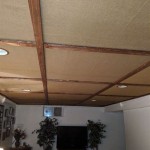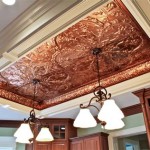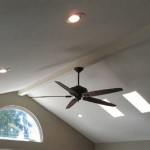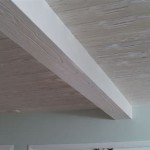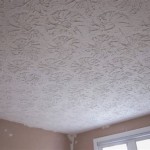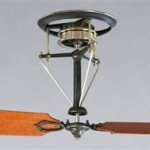How To Insulate A Basement Ceiling For Sound Reduction
Soundproofing a basement ceiling involves a multi-layered approach aimed at reducing noise transmission both into and out of the basement space. Effective sound insulation tackles airborne noise (voices, music) and impact noise (footsteps) using a combination of sound-absorbing and sound-blocking materials. This process significantly contributes to improving the overall comfort and usability of the basement and the rooms above.
Before commencing the insulation project, a thorough assessment of the existing basement ceiling is crucial. This inspection should identify any potential areas where sound leaks might occur, such as gaps around pipes, wiring, or recessed lighting fixtures. Addressing these weaknesses proactively will maximize the effectiveness of the soundproofing efforts.
Preparing the workspace is equally important. Remove any existing ceiling tiles or coverings. Clean the joist spaces to ensure proper adhesion of insulation materials. Wear appropriate safety gear, including eye protection, a dust mask, and gloves, throughout the entire process. This not only ensures personal safety but also prevents contamination of the insulation materials.
Materials and Tools Required
Selecting the right materials is paramount for successful sound insulation. Several options exist, each with varying degrees of effectiveness and cost. Consider the specific noise challenges and budget constraints when making these selections.
Insulation Materials:
Mineral Wool: This is a highly effective sound-absorbing material made from rock or slag. It offers excellent thermal and acoustic properties and is fire-resistant. Mineral wool batts fit snugly between joists and can significantly reduce sound transmission through the ceiling.
Fiberglass Insulation: While primarily used for thermal insulation, fiberglass also provides some sound absorption. Density is a key factor; higher density fiberglass offers better soundproofing capabilities. It is a more cost-effective option compared to mineral wool but less effective at sound attenuation.
Acoustic Panels: These panels are specifically designed to absorb sound reflections within a room, helping to reduce echo and reverberation. While they are generally installed on walls, lightweight versions can be attached to the ceiling for additional sound control.
Resilient Channels: These metal strips are designed to decouple the drywall from the ceiling joists, significantly reducing impact noise transmission. They create a physical break that minimizes the transfer of vibrations.
Soundproof Drywall (e.g., QuietRock): This specialized drywall incorporates multiple layers of materials that dampen sound vibrations. It is denser and heavier than standard drywall, providing superior sound blocking capabilities.
Green Glue Noiseproofing Compound: This viscoelastic damping compound is applied between layers of drywall to further reduce sound transmission. It converts sound energy into heat, effectively damping vibrations.
Other Essential Materials:
Acoustic Caulk: Used to seal gaps and cracks around pipes, wiring, and the perimeter of the ceiling to prevent sound leaks.
Drywall Screws: Specifically designed for drywall installation, ensuring secure attachment to the resilient channels.
Necessary Tools:
Utility Knife: For cutting insulation batts.
Tape Measure: For accurate measurements.
Staple Gun: To temporarily hold insulation in place.
Drywall Saw or Utility Knife: For cutting drywall.
Drill/Screwdriver: For installing drywall screws.
Caulk Gun: For applying acoustic caulk.
Safety Glasses and Dust Mask: For personal protection.
Step-by-Step Installation Process
The installation process involves several key steps, each contributing to the overall effectiveness of the soundproofing project. Careful attention to detail and adherence to best practices are essential for optimal results.
Step 1: Address Existing Gaps and Cracks: Before installing any insulation, thoroughly inspect the ceiling for any gaps or cracks around pipes, wiring, or recessed lighting fixtures. Seal these openings with acoustic caulk. This step is crucial as even small gaps can significantly compromise the soundproofing performance.
Step 2: Install Insulation Batts: Begin by measuring the space between the ceiling joists. Cut the insulation batts (mineral wool or fiberglass) to the appropriate size, ensuring a snug fit. Friction fit is preferred, but a staple gun can be used to temporarily hold the insulation in place. Ensure the insulation fills the entire cavity between the joists without excessive compression, which can reduce its effectiveness.
Step 3: Install Resilient Channels (Optional but Recommended): Resilient channels are installed perpendicular to the ceiling joists, typically spaced 16 or 24 inches apart. These channels decouple the drywall from the joists, significantly reducing impact noise transmission. Attach the resilient channels to the joists using screws, ensuring they are properly aligned and securely fastened.
Step 4: Install Drywall: If using standard drywall, consider applying Green Glue noiseproofing compound between two layers of drywall for enhanced sound dampening. If using soundproof drywall like QuietRock, a single layer may suffice. Lift the drywall sheets into place and attach them to the resilient channels (or directly to the joists if resilient channels are not used) using drywall screws. Ensure the screws are driven in straight and do not penetrate the channels’ metal, as this would negate their decoupling effect.
Step 5: Seal Drywall Seams and Edges: After installing the drywall, tape and mud the seams to create a smooth, continuous surface. Apply acoustic caulk around the perimeter of the ceiling where it meets the walls to seal any remaining gaps. This final step minimizes sound leakage and ensures the integrity of the soundproofing system.
Optimizing Sound Absorption and Blocking
Achieving optimal sound insulation involves not only selecting the right materials and following the correct installation procedures but also understanding the principles of sound absorption and blocking. Sound absorption reduces sound reflections within a space, while sound blocking prevents sound from traveling through a barrier.
Layering Materials: Combining different types of materials with varying densities and sound-absorbing properties is an effective strategy. For example, using mineral wool insulation in conjunction with resilient channels and soundproof drywall creates a multi-layered system that addresses both airborne and impact noise.
Density and Mass: Denser and heavier materials generally provide better sound blocking. This is why soundproof drywall, which is significantly denser than standard drywall, is more effective at reducing sound transmission. Adding mass to the ceiling assembly is a key factor in improving its soundproofing performance.
Decoupling: Decoupling involves separating the drywall from the ceiling joists using resilient channels. This creates a physical break that minimizes the transfer of vibrations, significantly reducing impact noise transmission. Decoupling is particularly effective at reducing footsteps and other impact noises from the floor above.
Air Tightness: Sealing all gaps and cracks is crucial for preventing sound leakage. Even small openings can allow sound to bypass the insulation materials and compromise the overall soundproofing performance. Acoustic caulk is an essential tool for achieving an airtight seal around pipes, wiring, and the perimeter of the ceiling.
Addressing Recessed Lighting: Recessed lighting fixtures can create significant sound leaks in a ceiling. Consider using airtight recessed lighting fixtures designed to minimize sound transmission. Alternatively, build soundproof boxes around the existing fixtures using plywood and Green Glue to create a barrier that blocks sound. Ensure proper ventilation to prevent overheating.
HVAC Considerations: Ductwork running through the basement ceiling can transmit sound between rooms. Wrap the ducts with sound-dampening material, such as mass-loaded vinyl or acoustic lagging, to reduce noise transmission. Consider using flexible duct connectors to further isolate the HVAC system from the ceiling structure. A professional HVAC technician should be consulted to ensure these modifications do not negatively impact the system's performance.
By carefully considering these factors and implementing the recommended techniques, it is possible to significantly improve the sound insulation of a basement ceiling, creating a more comfortable and usable space for both the basement and the rooms above. Regular maintenance and inspections can help ensure the continued effectiveness of the soundproofing efforts.

Soundproofing Ceilings How To Soundproof A Ceiling

Soundproofing A Ceiling Unfinished Basement Ideas Renovations

6 Est Ways To Soundproof A Basement Ceiling

How To Soundproof A Basement Ceiling

Soundproofing A Home Work Technical Details Two Teaching S

7 Ways To Soundproof A Ceiling That Really Work

Best Insulation For Soundproofing Your Ceiling Renoviso

What To Know About Soundproofing A Basement Ceiling

Soundproofing Basement Insulation Services In Denver Co

Walls Sound Proofing Basement Remodeling Ceiling
Related Posts

